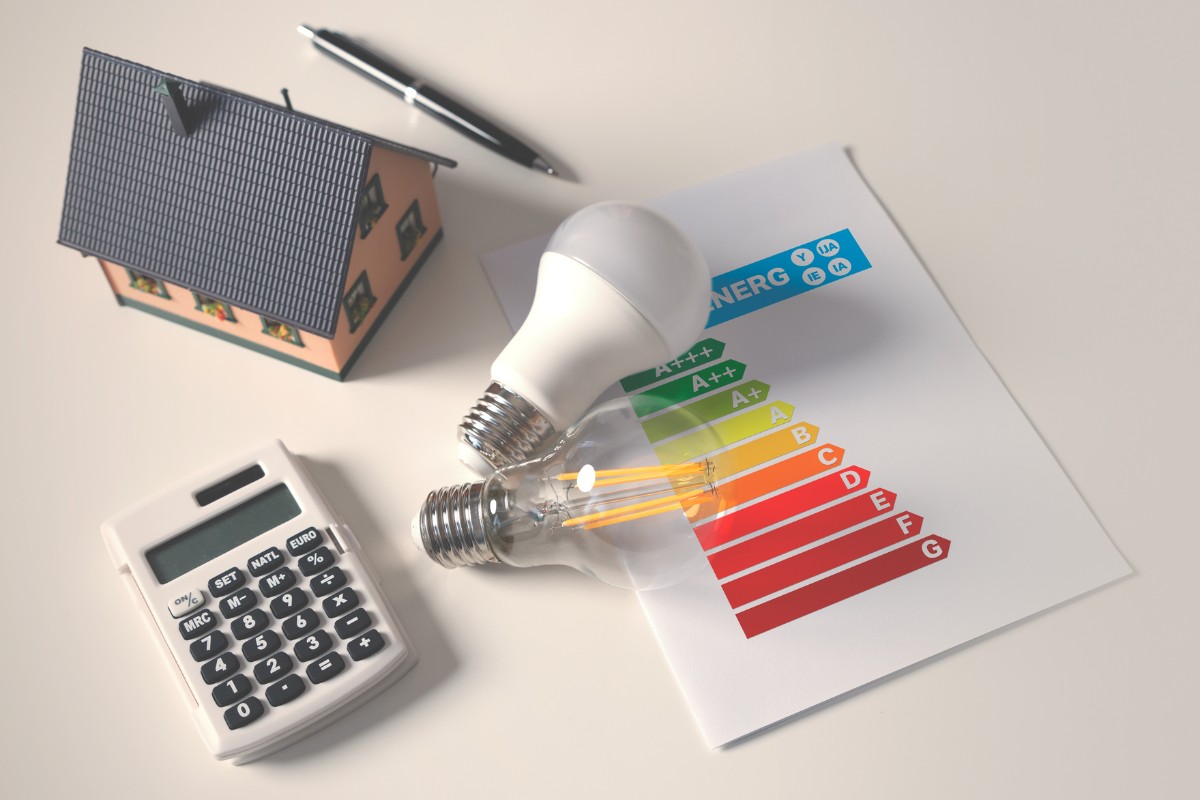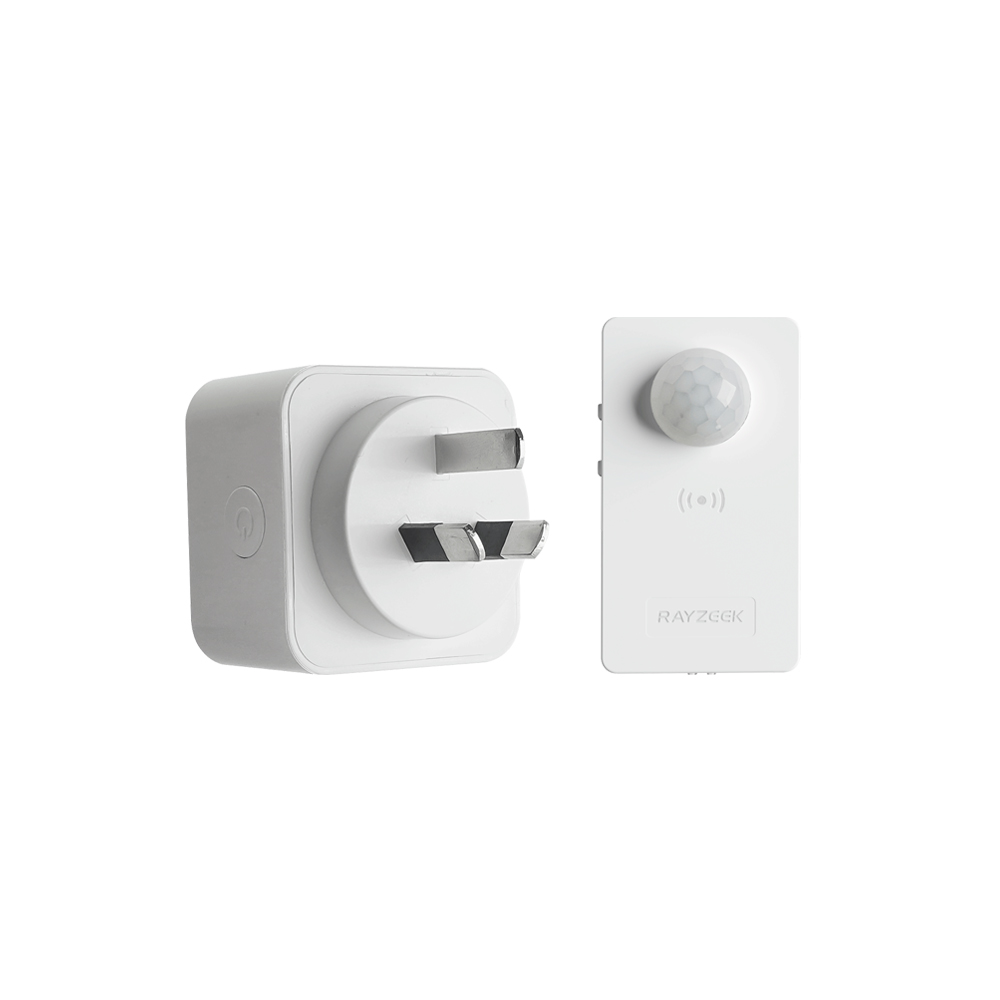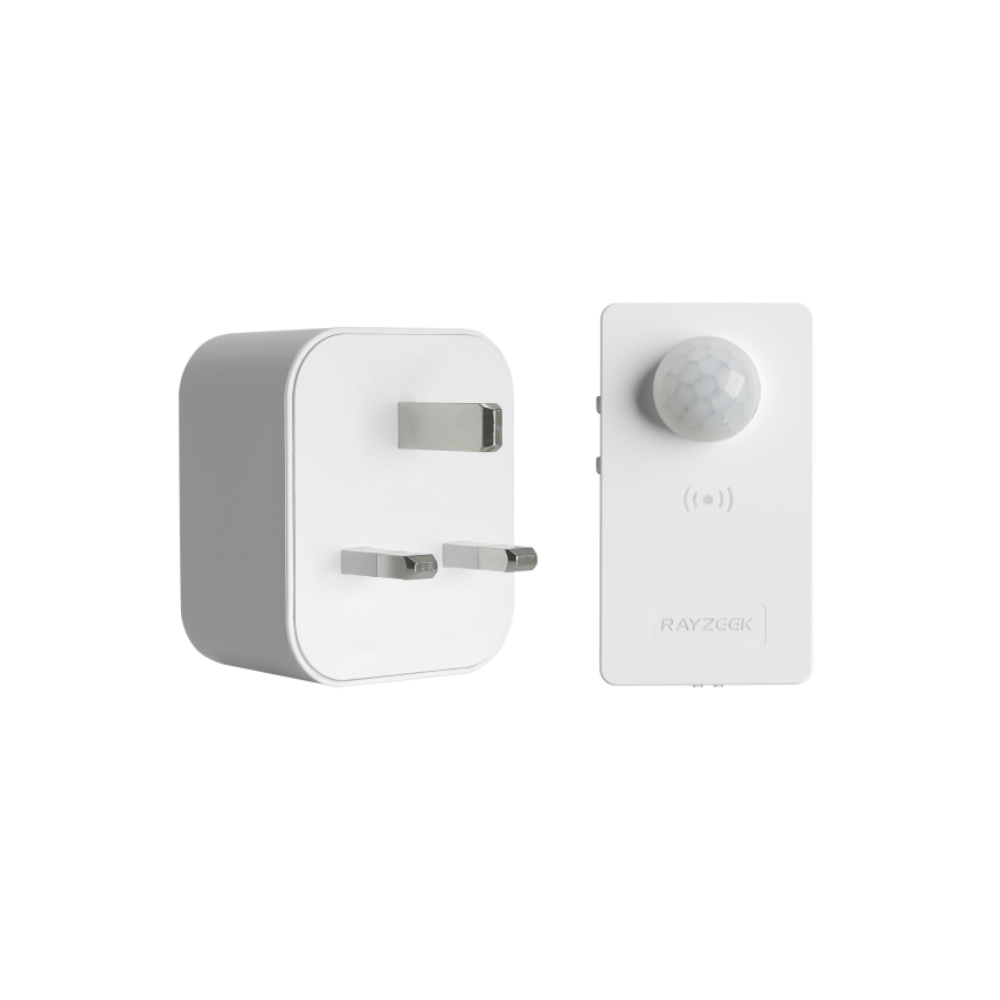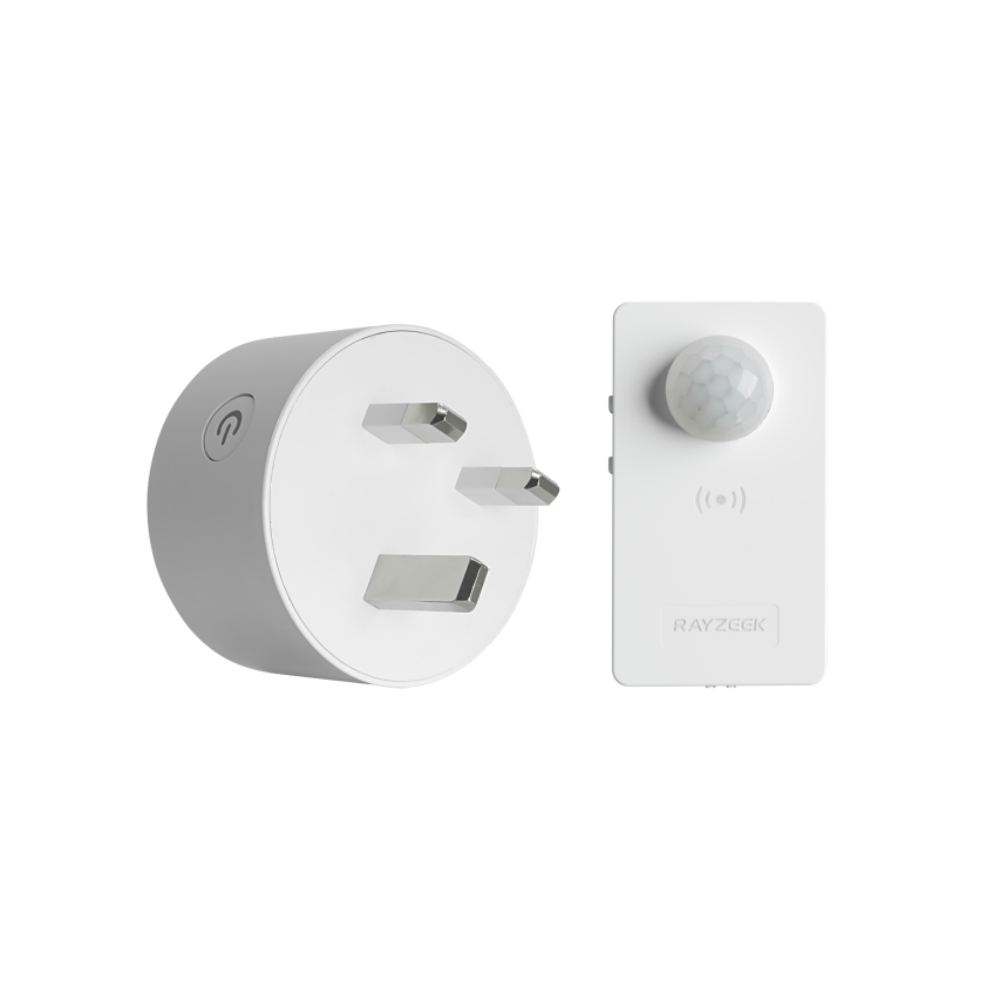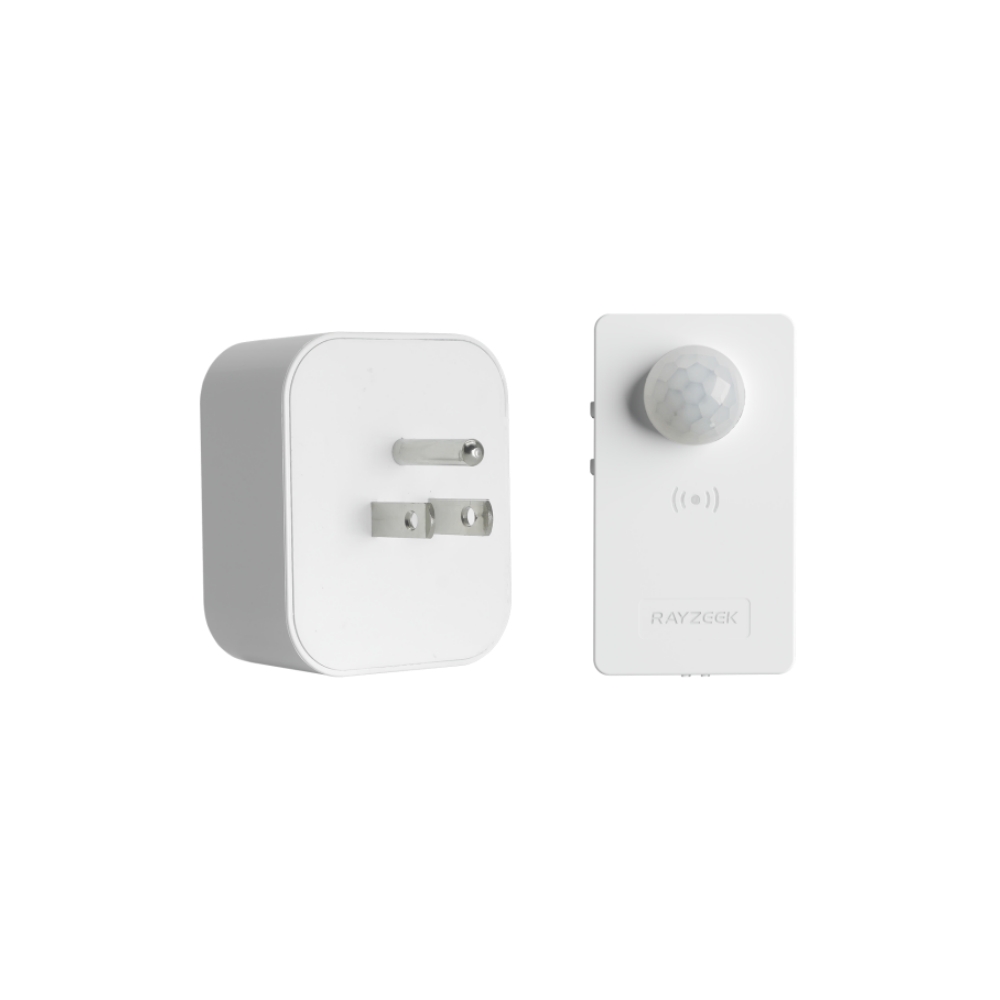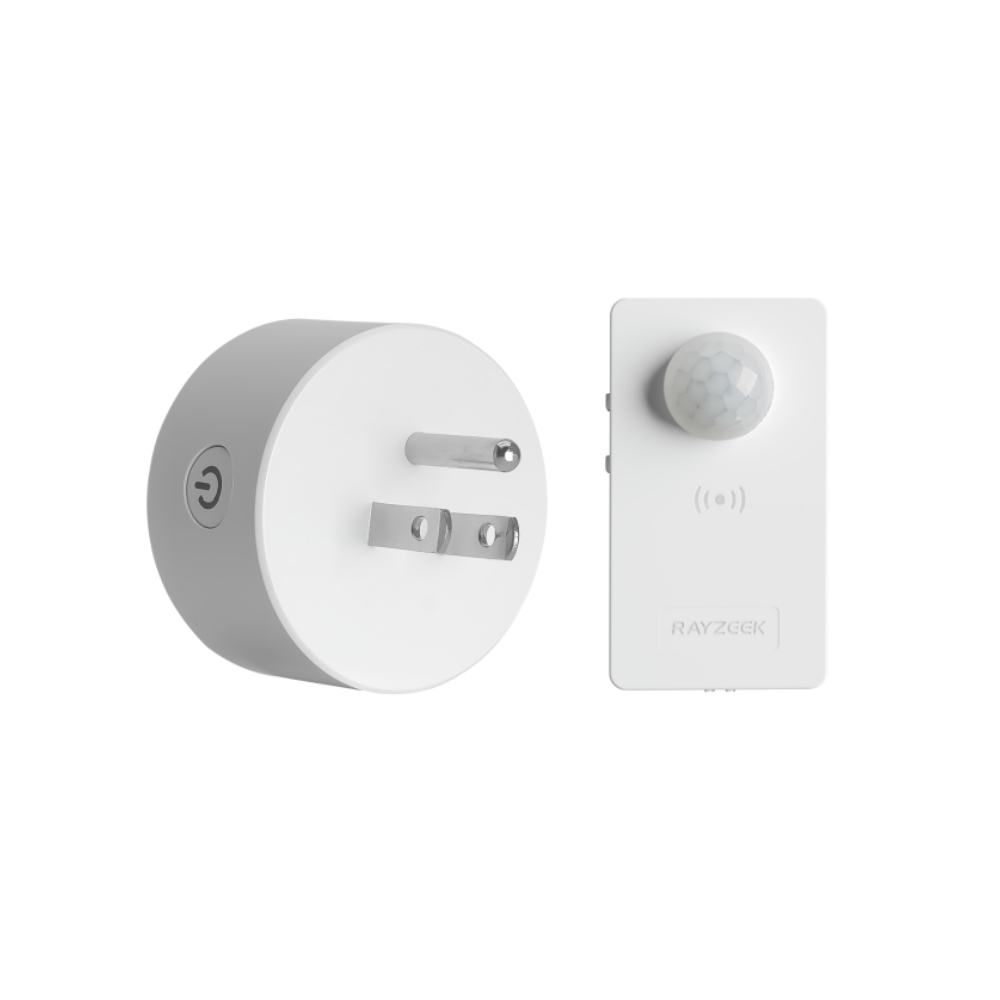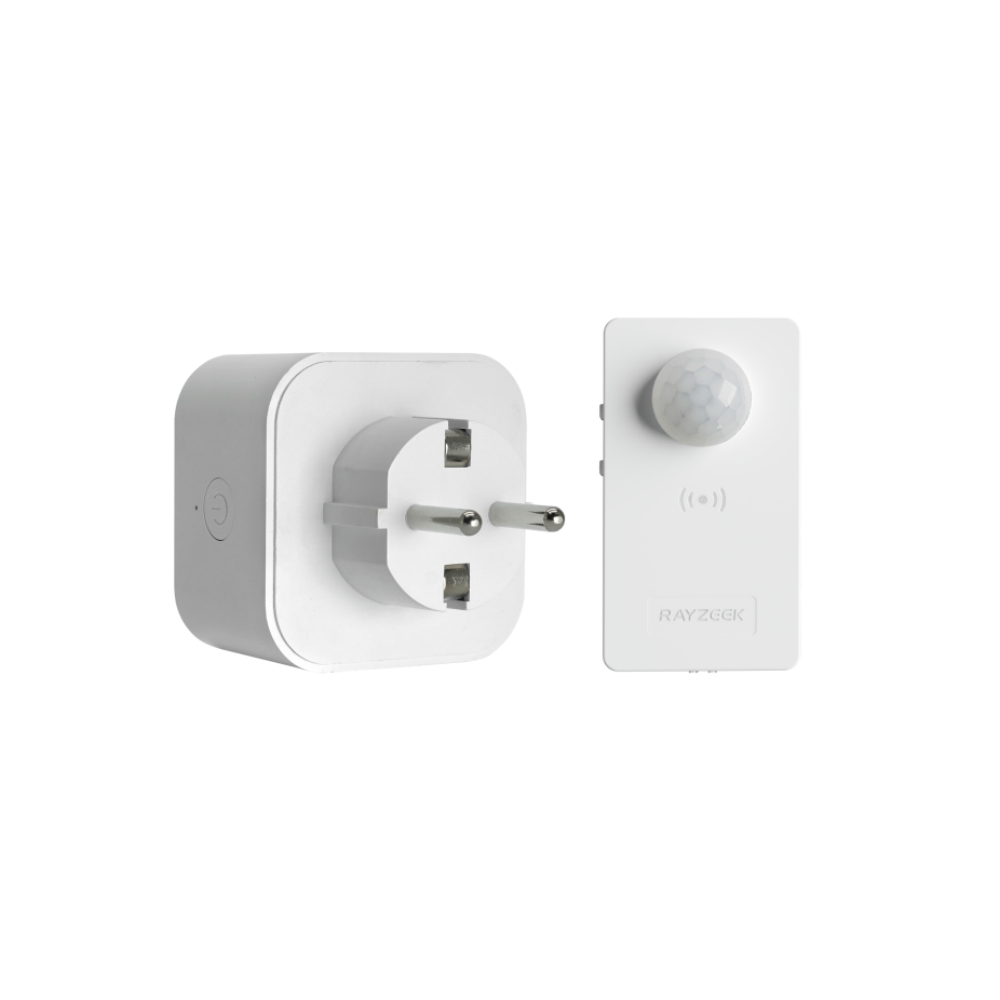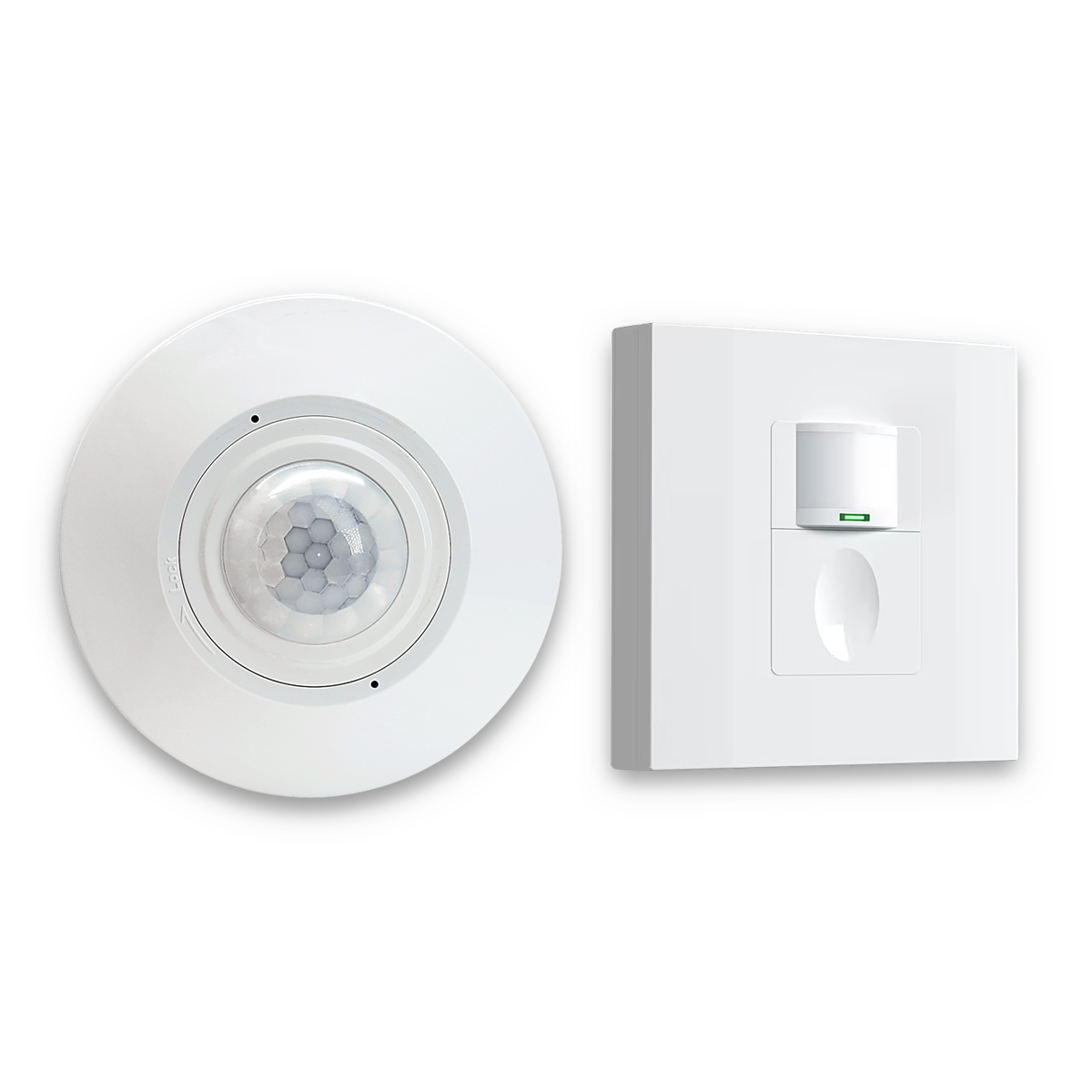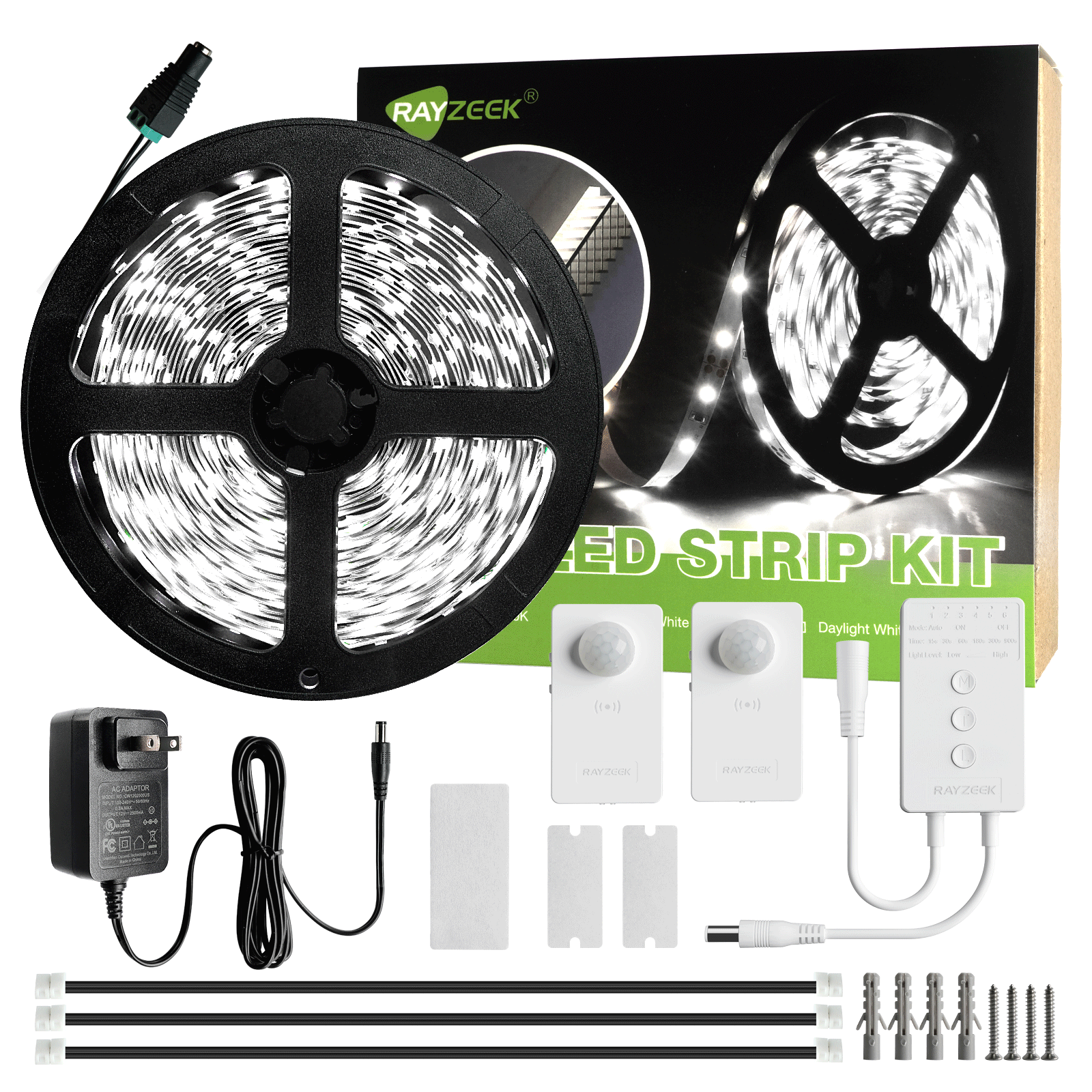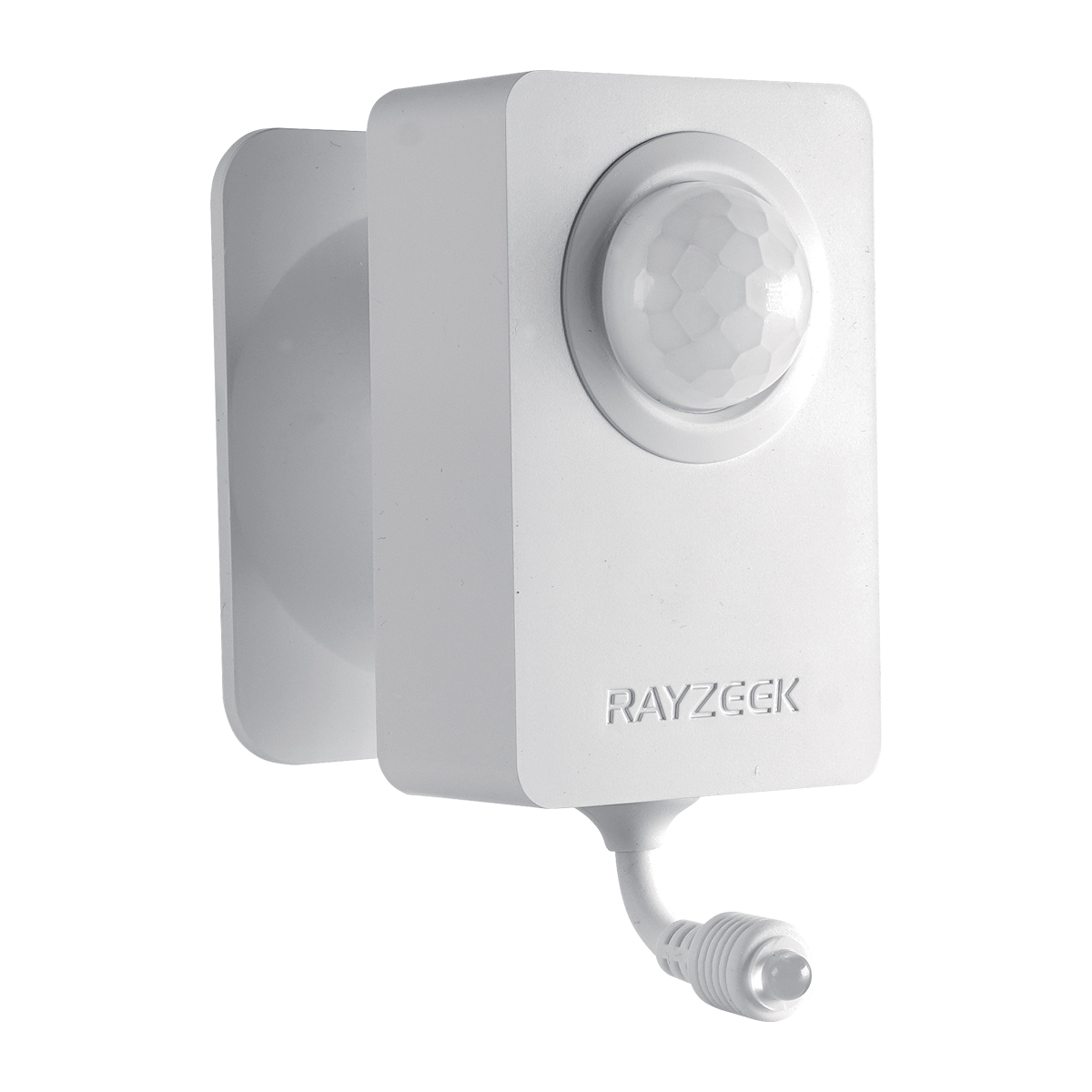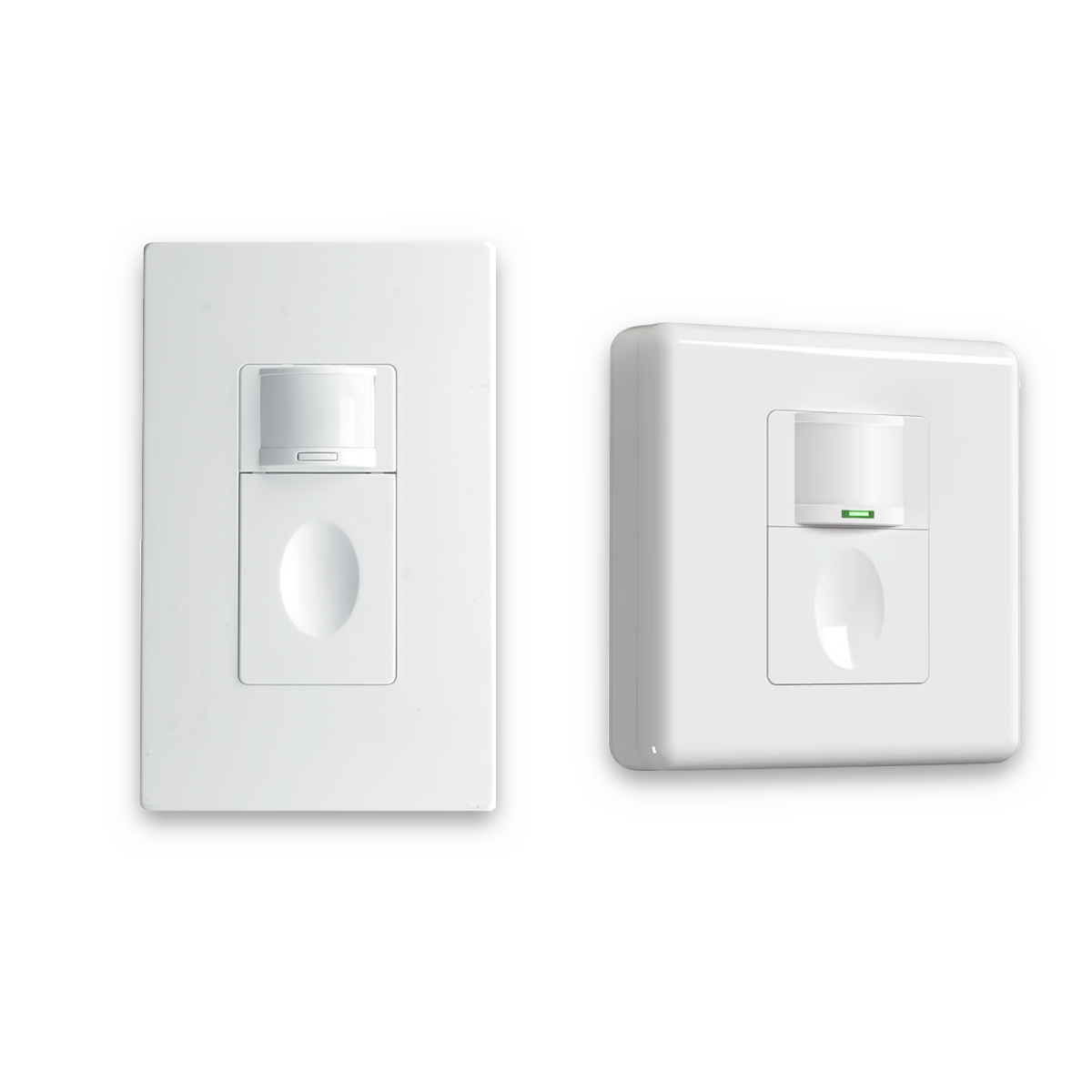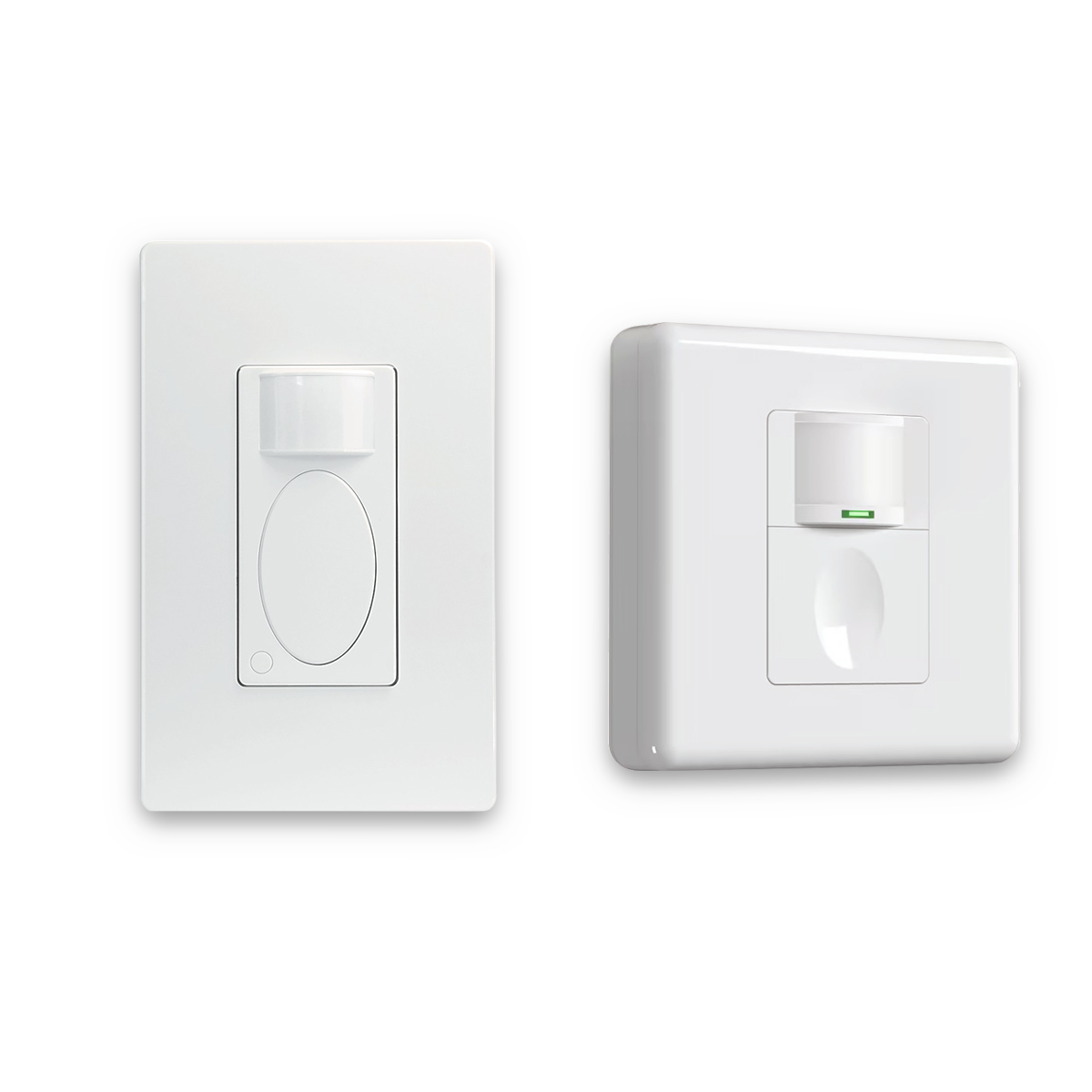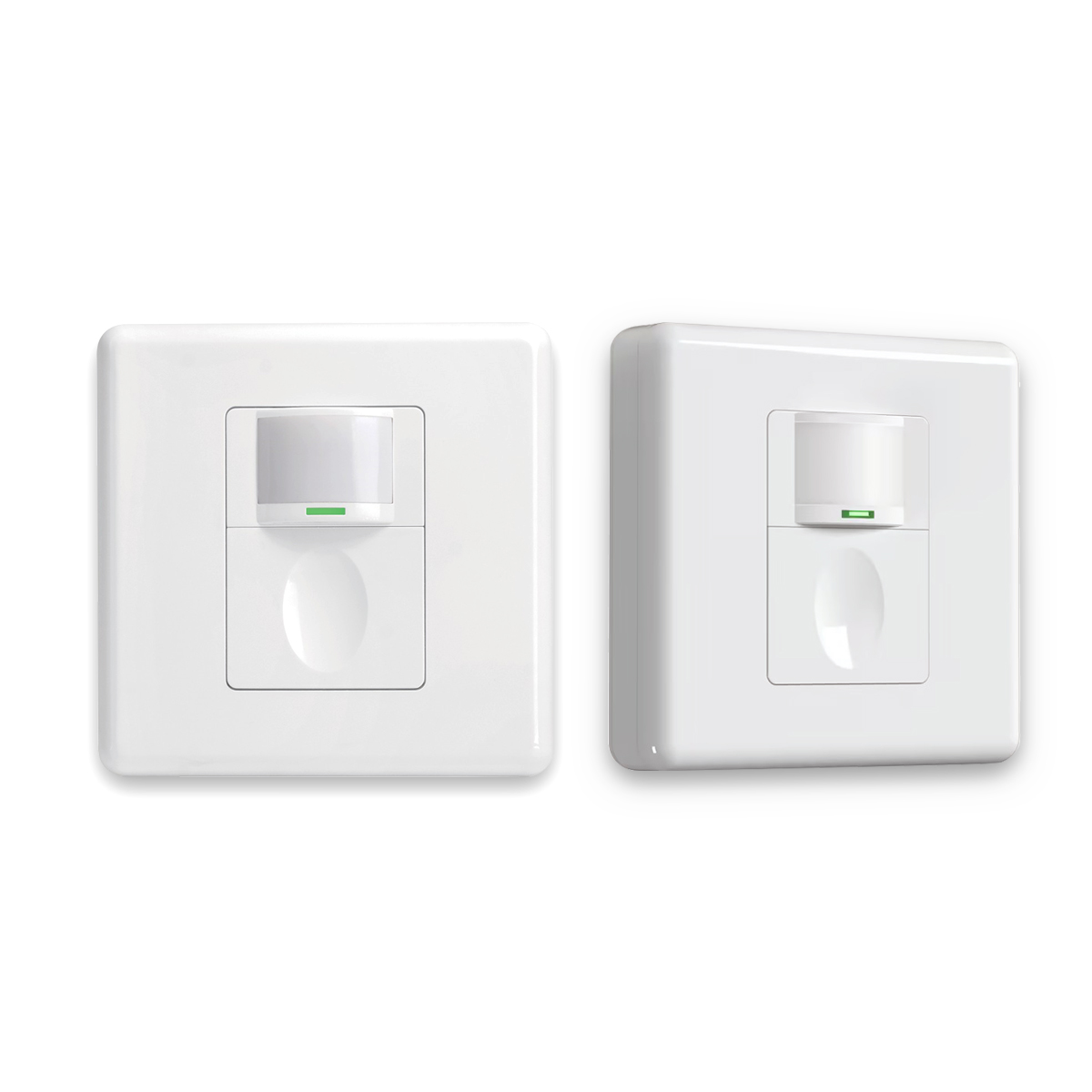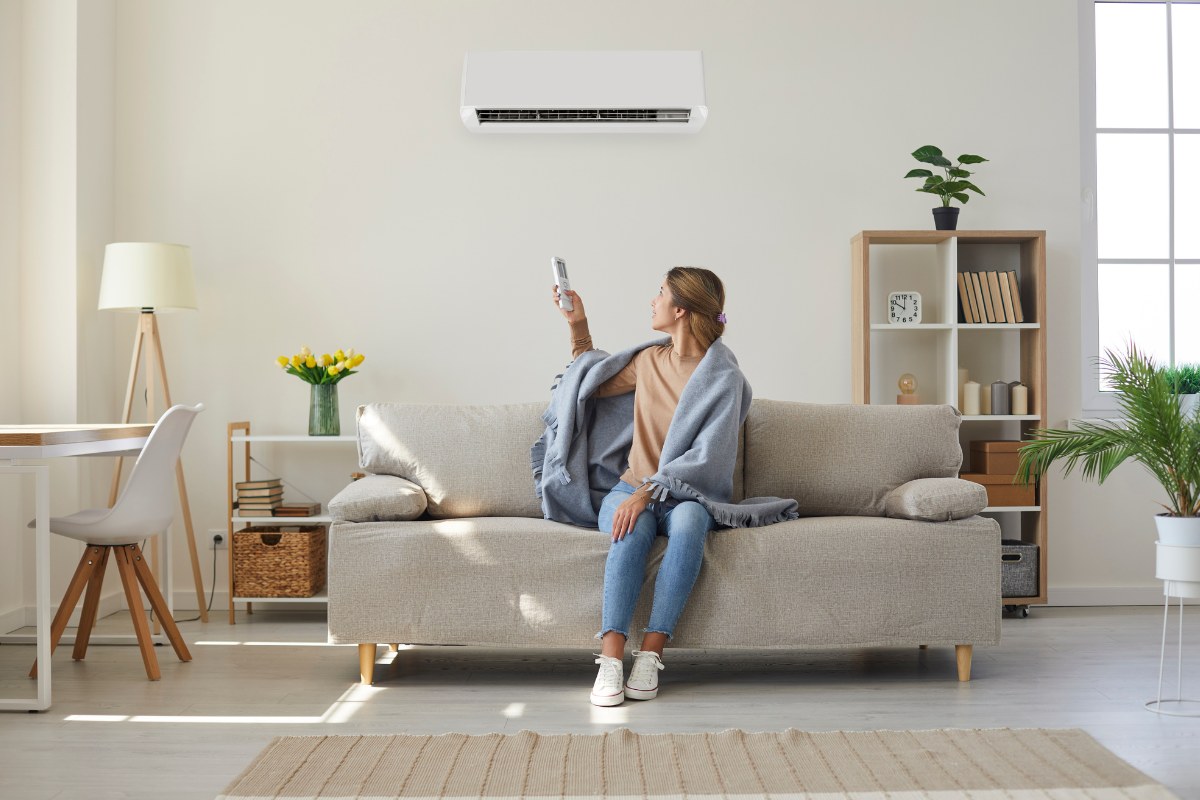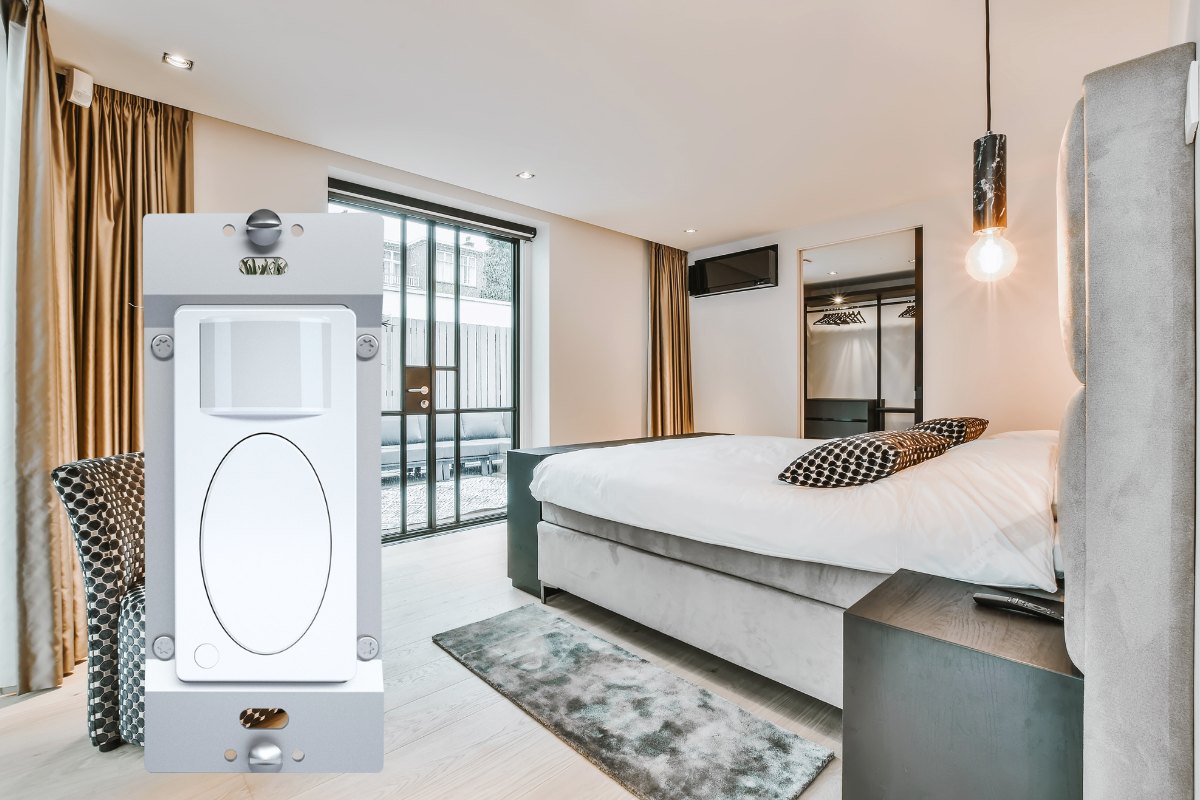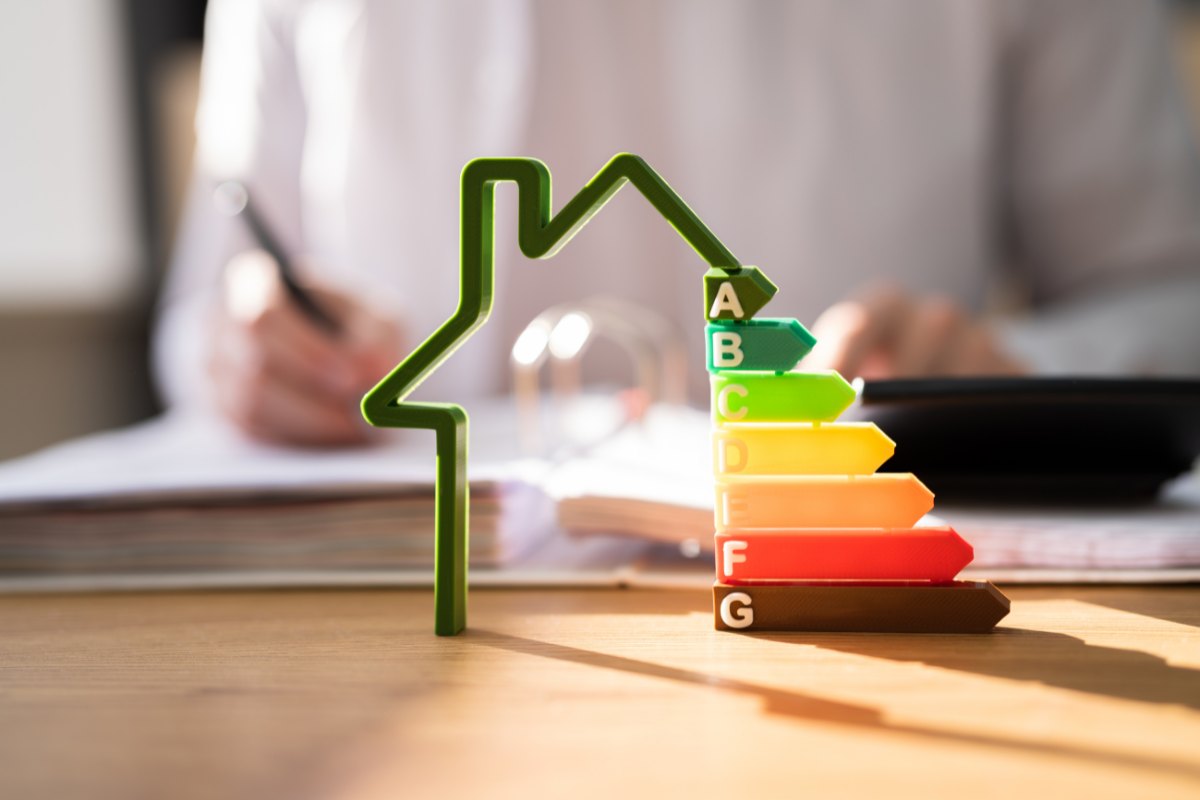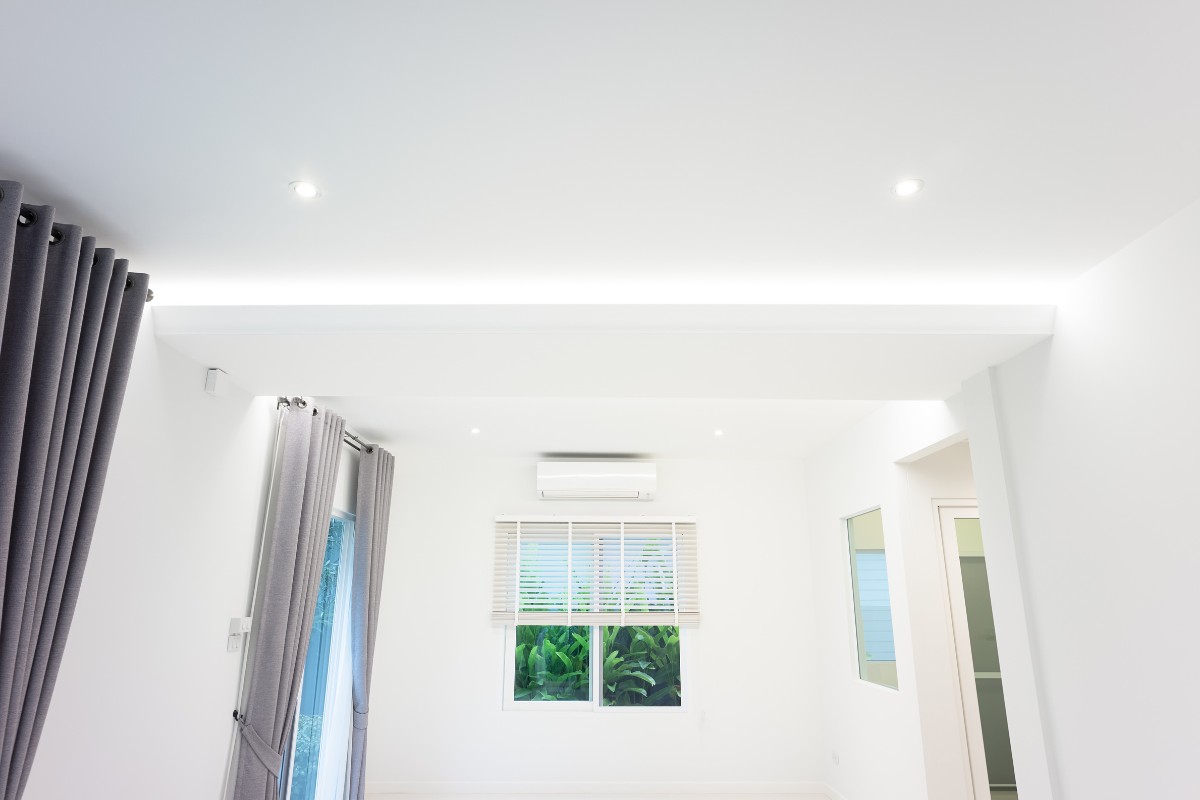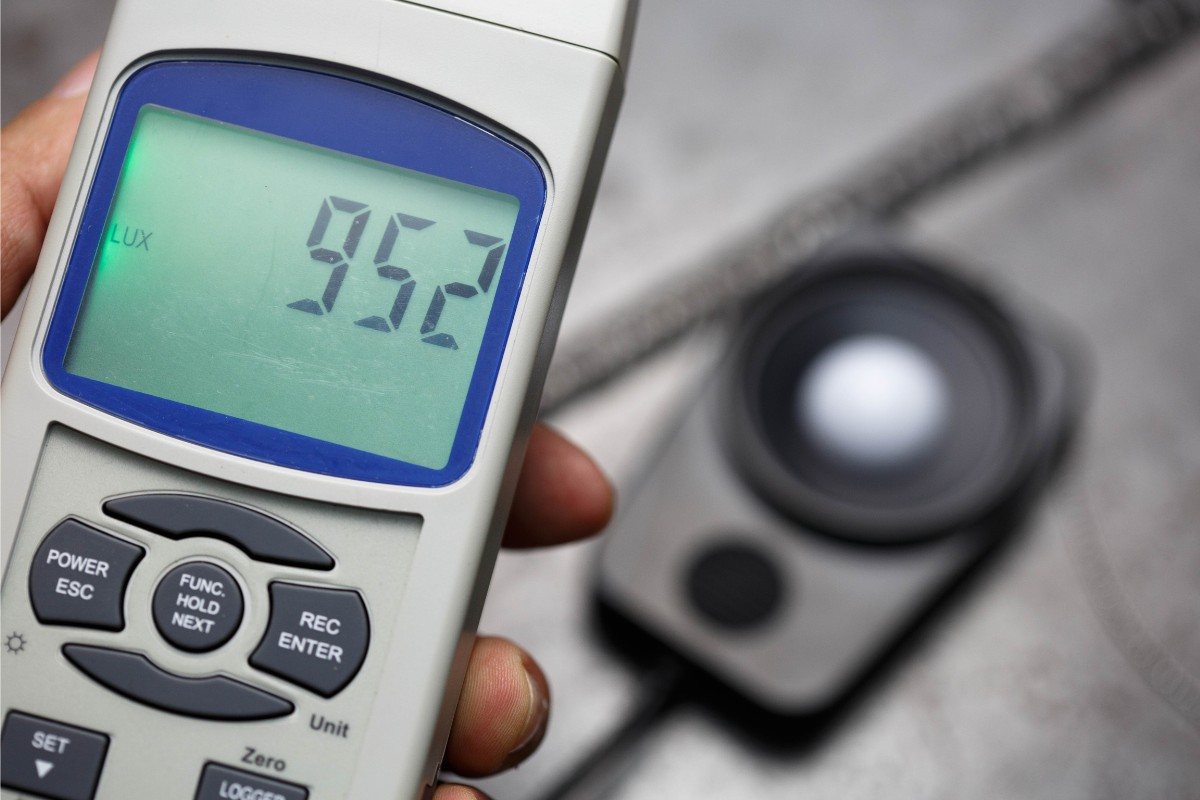In today’s world, where environmental concerns and rising energy costs are at the forefront of many homeowners’ minds, understanding and implementing energy-saving strategies has become increasingly important.
This comprehensive guide will explore various ways to reduce energy consumption in your home, ultimately leading to lower utility bills and a reduced carbon footprint. From simple behavioral changes to more significant home improvements, we’ll cover a wide range of energy-saving tips that can make a substantial difference in your home’s energy efficiency.
Оглавление
- Heating and Cooling Efficiency
- Appliance Energy Efficiency
- Lighting Efficiency
- Home Insulation and Weatherization
- Water Heating and Conservation
- Electronics and Standby Power Management
- Energy-Efficient Behavior and Habits
- Energy Audits and Professional Assessments
Heating and Cooling Efficiency
Heating and cooling account for a significant portion of a home’s energy use, typically around 56% according to the U.S. Department of Energy. To optimize your heating and cooling efficiency, it’s essential to focus on proper maintenance, optimal thermostat settings, and energy-efficient equipment so you can achieve substantial energy savings.
Optimal Thermostat Settings
One of the simplest yet most effective ways to reduce energy consumption is by adjusting your thermostat settings. In summer, set your thermostat to 78°F (26°C) when you’re at home and awake, and raise it a few degrees when you’re away or sleeping. During winter, aim for 68°F (20°C), and lower it slightly when you’re away or sleeping. For every degree you adjust your thermostat closer to the outside temperature, you can save up to 3% on your energy costs.
Вдохновитесь портфолио датчиков движения Rayzeek.
Не нашли то, что хотели? Не волнуйтесь. Всегда есть альтернативные способы решения ваших проблем. Возможно, вам поможет один из наших портфелей.
Programmable and smart thermostats can take this energy-saving strategy a step further. These devices allow you to automatically adjust temperature settings based on your schedule. For instance, you can program the thermostat to reduce heating or cooling when you’re asleep or away from home. By utilizing these features, you can save up to 10% on your annual heating and cooling costs.
HVAC Maintenance Tips
Regular maintenance of your HVAC system is crucial for maintaining its efficiency. A simple task such as changing air filters monthly can improve your system’s efficiency by up to 15%. Dirty filters restrict airflow, forcing your system to work harder and consume more energy.
Annual professional HVAC tune-ups are also essential. During these check-ups, a technician can identify and address any issues that might be reducing your system’s efficiency. This preventive maintenance can extend the life of your equipment and ensure it operates at peak efficiency.
Energy-Efficient HVAC Options
When it’s time to replace your HVAC system, consider energy-efficient options like heat pumps or high-efficiency systems with ENERGY STAR certification. Heat pumps, for example, can be up to three times more efficient than conventional heating systems because they move heat rather than generate it.
ENERGY STAR certified central air conditioners use 8% less energy than conventional new models. While these systems may have a higher upfront cost, the long-term energy savings can be substantial.
Additional Cooling Strategies
Supplementing your air conditioning with ceiling fans can allow you to raise your thermostat setting by about 4°F without affecting comfort. Remember to turn off fans when you leave the room, as they cool people, not spaces.
Natural cooling strategies can also be effective. On cool nights, open windows to let in cool air, and close them during the day to keep the heat out. This simple practice can significantly reduce your reliance on air conditioning.
By implementing these heating and cooling efficiency measures, you can create a more comfortable home environment while significantly reducing your energy consumption and costs.
Appliance Energy Efficiency
Appliances are another significant source of energy consumption in homes, accounting for nearly 20% of the average household’s energy use. Choosing energy-efficient appliances and using them wisely can lead to substantial energy savings.
The Importance of ENERGY STAR Certification
When shopping for new appliances, look for the ENERGY STAR label. This certification, backed by the U.S. Environmental Protection Agency, indicates that the appliance meets strict energy efficiency guidelines. For example, ENERGY STAR certified washing machines use about 25% less energy and 33% less water than standard models.
Refrigerator Efficiency
Your refrigerator is one of the few appliances that runs continuously, making its efficiency crucial. Set your refrigerator temperature between 35°F to 38°F (1.7°C to 3.3°C) for optimal energy efficiency and food preservation. The freezer should be set to 0°F (-18°C).
Regular maintenance can also improve your refrigerator’s efficiency. Clean the condenser coils at least twice a year to remove dust and debris that can impede heat transfer. Check the door seals regularly to ensure they’re tight and replace them if they’re worn or damaged.
Washing Machine Efficiency
One of the easiest ways to save energy with your washing machine is to use cold water whenever possible. Using cold water can reduce energy use by up to 90% compared to hot water cycles. Modern detergents are designed to work effectively in cold water, so you don’t have to sacrifice cleanliness for energy efficiency.
Always aim to wash full loads. Running your washing machine with partial loads wastes both water and energy. If you must wash a smaller load, be sure to adjust the water level settings accordingly.
Dryer Efficiency
While clothes dryers are energy-intensive appliances, there are ways to use them more efficiently. Clean the lint filter after every load to improve air circulation and reduce drying time. When possible, consider air-drying clothes on a line or drying rack. This not only saves energy but can also extend the life of your clothes.
If you’re in the market for a new dryer, consider a heat pump model. These dryers are significantly more energy-efficient than conventional models, using up to 60% less energy.
Dishwasher Efficiency
Like washing machines, dishwashers are most efficient when run with full loads. Many modern dishwashers have sensors that detect how dirty the dishes are and adjust the cycle accordingly. Use these energy-saving cycles whenever possible.
Avoid pre-rinsing dishes before loading them into the dishwasher. Most modern dishwashers are designed to handle dirty dishes, and pre-rinsing wastes water and energy. Scrape off large food particles, but let your dishwasher handle the rest.
By choosing energy-efficient appliances and using them wisely, you can significantly reduce your home’s energy consumption. Remember, the initial cost of an energy-efficient appliance may be higher, but the long-term energy savings often make them a more economical choice in the long run.
Lighting Efficiency
Lighting accounts for about 15% of a home’s electricity use, making it another important area to focus on for energy savings. Adopting energy-efficient lighting options and smart usage habits can help you significantly reduce this portion of your energy consumption.
Energy-Efficient Lighting Options
LED bulbs are currently the most energy-efficient lighting option available. They use up to 90% less energy than traditional incandescent bulbs and can last up to 25 times longer. While LED bulbs may have a higher upfront cost, their long lifespan and energy efficiency make them a cost-effective choice in the long run.
CFL bulbs are another energy-efficient option, though they’re becoming less common as LED technology improves. CFLs use about 75% less energy than incandescent bulbs and last about 10 times longer.
When shopping for energy-efficient bulbs, look for the ENERGY STAR label. ENERGY STAR certified LED bulbs use 75% less energy and last 15 times longer than incandescent bulbs.
Smart Lighting Solutions
Smart lighting systems offer additional energy-saving potential. These systems allow you to control your lights remotely via smartphone apps or voice commands. You can easily turn off forgotten lights, dim lights when full brightness isn’t needed, or set schedules to automatically turn lights on and off.
Motion sensors and timers are also effective tools for reducing unnecessary lighting use. Install motion sensors in areas like garages, outdoor spaces, or less frequently used rooms. Timers can be useful for outdoor lighting, ensuring lights are only on when needed.
Natural Lighting Strategies
Maximizing natural light use can significantly reduce your reliance on artificial lighting during daylight hours. Keep windows clean and arrange furniture to avoid blocking natural light. Light-colored walls and reflective surfaces can help distribute natural light more effectively throughout your home.
Consider installing skylights or solar tubes in darker areas of your home to bring in more natural light. While these may require an initial investment, they can lead to long-term energy savings and create a more pleasant living environment.
Lighting Habits
Developing good lighting habits is just as important as using efficient bulbs. Always turn off lights when leaving a room, even if you’ll only be gone for a short time. For areas where lights are frequently left on, consider installing occupancy sensors that automatically turn lights off when no one is present.
Use task lighting instead of lighting entire rooms when possible. For example, use a desk lamp when working rather than illuminating the entire room.
By combining energy-efficient lighting technologies with smart usage habits, you can significantly reduce your lighting-related energy consumption. Remember, switching to LED bulbs alone can save the average household about $225 in energy costs per year.
Home Insulation and Weatherization
Proper insulation and weatherization are essential for maintaining a comfortable and energy-efficient home. They help keep your home warm in winter and cool in summer, reducing the workload on your heating and cooling systems. In fact, adequate insulation and weatherization can reduce heating and cooling costs by up to 20%.
Understanding Insulation
Insulation works by slowing the transfer of heat between the inside and outside of your home. The effectiveness of insulation is measured by its R-value, with higher values indicating better insulating properties. The recommended R-value for your home depends on your climate zone and the area of the house being insulated.
Attic Insulation
The attic is one of the most important areas to insulate in your home. Heat rises, and in winter, a poorly insulated attic can allow a significant amount of heat to escape. In summer, a well-insulated attic helps keep hot air from seeping into your living spaces.
For most climates, the U.S. Department of Energy recommends attic insulation with an R-value between R-30 and R-60. Common insulation materials for attics include fiberglass batts, blown-in cellulose, or spray foam insulation. Each has its advantages in terms of cost, effectiveness, and ease of installation.
Wall Insulation
Insulating your walls can be more challenging in existing homes, but it’s still possible and can lead to significant energy savings. For existing walls, blown-in insulation (either cellulose or fiberglass) can be added through small holes drilled in the walls, which are then patched.
If you’re renovating and have the walls open, take the opportunity to add or upgrade insulation. Fiberglass batts, spray foam, or rigid foam boards are all good options for wall insulation.
Window Efficiency
Windows can be a major source of heat loss in winter and heat gain in summer. ENERGY STAR certified windows can lower household energy bills by 12% on average. These windows often feature double or triple panes, low-E coatings, and gas fills between panes to improve insulation.
If replacing windows isn’t in your budget, there are still ways to improve their efficiency. Apply weatherstripping around the frames and use caulk to seal any gaps. In winter, use heavy curtains or cellular shades to provide an extra layer of insulation. In summer, reflective window films can help reduce heat gain.
Door Efficiency
Like windows, doors can be a significant source of air leaks. Energy-efficient doors, particularly those that are ENERGY STAR certified, can help reduce these losses. These doors often feature better insulation and improved weatherstripping.
For existing doors, check for air leaks around the edges and install weatherstripping if needed. Pay special attention to the threshold seal at the bottom of the door, as this is often a major source of drafts.
Air Sealing
In addition to insulation, air sealing is crucial for an energy-efficient home. Use caulk and weatherstripping to seal air leaks around windows, doors, and any openings where utilities enter the home. Pay special attention to the rim joists in your basement or crawl space – air sealing and insulating this area can save up to 15% on heating and cooling costs.
Investing in proper insulation and weatherization may have a higher upfront cost, but the long-term energy savings can be substantial. Not only will you save on your utility bills, but you’ll also enjoy a more comfortable living environment year-round.
Water Heating and Conservation
Water heating accounts for about 18% of home energy use, making it a significant area for potential energy savings. By focusing on both the efficiency of your water heater and your water usage habits, you can substantially reduce this portion of your energy consumption.
Energy-Efficient Water Heaters
When it’s time to replace your water heater, consider energy-efficient options like heat pump water heaters or tankless models. Heat pump water heaters can be up to three times more efficient than conventional electric water heaters. They work by pulling heat from the surrounding air to heat water, rather than generating heat directly.
Tankless water heaters, which heat water on demand rather than storing it in a tank, can be 24–34% more energy-efficient than conventional storage tank water heaters for homes that use 41 gallons or less of hot water daily.
Ищете энергосберегающие решения с функцией активации движением?
Свяжитесь с нами, чтобы получить полный комплект PIR-датчиков движения, энергосберегающих продуктов, выключателей с датчиками движения и коммерческих решений для работы в режиме "занято/не занято".
If you’re not ready to replace your water heater, you can still improve its efficiency. Set your water heater temperature to 120°F (49°C). This temperature is hot enough for most household uses and can reduce your water heating energy consumption by 4-22% annually.
Insulating Water Heaters and Pipes
Insulating your water heater and hot water pipes can reduce heat loss and increase efficiency. For water heaters, use an insulating blanket designed for this purpose. Be sure to follow the manufacturer’s instructions, as some newer models may not require additional insulation.
Insulating hot water pipes, especially in unheated areas like basements or crawl spaces, can help water arrive at the tap 2°F–4°F hotter than it would through uninsulated pipes. This means you can lower your water heater temperature setting without affecting your comfort.
Water-Saving Fixtures
Reducing hot water use is another effective way to save energy. Low-flow showerheads and faucet aerators can significantly reduce water consumption without sacrificing performance. Look for WaterSense labeled products, which are certified to be at least 20% more water-efficient than standard models.
A low-flow showerhead can save 2,700 gallons of water per year for a family of four. This not only saves water but also reduces the energy needed to heat that water.
Water Conservation Habits
Developing water-conscious habits can lead to significant energy savings:
- Take shorter showers: Reducing shower time by just a minute or two can save hundreds of gallons of water per month.
- Fix leaks promptly: A hot water faucet leaking at one drip per second can waste up to 1,661 gallons of water annually.
- Use cold water for laundry: Modern detergents work well in cold water, and using cold water can save up to $60 per year on energy costs.
- Run full loads in dishwashers and washing machines: This maximizes water and energy efficiency.
By combining energy-efficient water heating technology with water conservation habits, you can significantly reduce both your water and energy consumption. Remember, saving hot water not only reduces your water bill but also your energy bill.
Electronics and Standby Power Management
In the modern home, electronics and appliances that consume standby power can account for 5-10% of residential energy use. This “phantom” or “vampire” power draw occurs when devices are turned off but still plugged in, silently consuming electricity. By managing this standby power consumption, you can achieve noticeable energy savings.
Understanding Standby Power
Many electronic devices and appliances continue to draw small amounts of power when turned off but still plugged in. This standby power allows for features like remote control operation, digital clocks, and maintaining network connectivity. While the power draw for each device may be small, the cumulative effect across all devices in a home can be significant.
Advanced Power Strips
One of the most effective tools for managing standby power is the advanced power strip. Unlike traditional power strips, advanced power strips can automatically cut power to devices that have entered standby mode. They typically work in one of three ways:
- Timer-based: These power strips cut power to devices at set times, such as overnight when devices are unlikely to be in use.
- Occupancy sensing: These use motion detectors to cut power when no one is in the room.
- Current sensing: These detect when a primary device (like a TV) is turned off and cut power to associated peripherals (like a DVD player or game console).
Using a smart power strip can save up to $100 per year on standby power costs.
Computer and Home Office Efficiency
Computers and associated equipment can be significant energy consumers in a home office setup. ENERGY STAR certified computers are up to 60% more energy efficient than standard models. To maximize energy savings:
- Enable sleep and hibernate modes on your computer. Set your computer to sleep after 15-30 minutes of inactivity.
- Use a laptop instead of a desktop when possible, as laptops typically use less energy.
- Choose an ENERGY STAR certified monitor and set it to sleep after 5-10 minutes of inactivity.
- Use a smart power strip to cut power to peripherals like printers and speakers when the computer is off or in sleep mode.
Entertainment System Efficiency
Home entertainment systems can be another source of significant standby power consumption. To improve efficiency:
- Choose ENERGY STAR certified TVs, which are on average 27% more energy efficient than standard models.
- Use the automatic brightness control feature on your TV, which adjusts the picture brightness to the amount of light in the room.
- Stream through energy-efficient devices like smart TVs or ENERGY STAR certified streaming devices rather than game consoles, which use more power.
- Unplug rarely used devices like DVD players or use a smart power strip to cut their power when not in use.
By implementing these strategies, you can significantly reduce the energy consumption of your electronics and home office equipment. Remember, while each individual saving may seem small, they add up to substantial energy and cost savings over time.
Energy-Efficient Behavior and Habits
While upgrading to energy-efficient appliances and systems can lead to significant energy savings, developing energy-conscious habits in your daily life can be equally impactful. These behavioral changes often cost nothing to implement but can lead to substantial reductions in energy consumption and utility bills.
Thermostat Management
One of the most effective energy-saving habits is proper thermostat management. Adjusting your thermostat by 7-10°F for 8 hours a day (such as when you’re asleep or away from home) can save up to 10% on your annual heating and cooling costs. In summer, set your thermostat as high as comfortably possible, and in winter, set it as low as comfortable.
If you have a programmable thermostat, take full advantage of its features. Set it to automatically adjust temperatures based on your typical schedule. For example, you might program it to reduce heating or cooling 30 minutes before you typically go to bed, and to start warming or cooling your home shortly before you wake up or return from work.
Appliance Usage Habits
Developing energy-efficient habits when using appliances can lead to significant savings:
- Only run full loads in your dishwasher and washing machine. This maximizes the energy efficiency of each cycle.
- Use cold water for laundry whenever possible. Modern detergents are effective in cold water, and using cold water can save up to $60 per year on energy costs.
- Air dry dishes and clothes when possible instead of using the heat-dry setting on your dishwasher or your clothes dryer.
- Take advantage of off-peak energy rates if your utility offers them. Run energy-intensive appliances during these times to save on electricity costs.
Lighting Habits
Simple changes in how you use lighting can lead to noticeable energy savings:
- Make it a habit to turn off lights when leaving a room, even if you’ll only be gone for a short time.
- Maximize the use of natural light. Open curtains and blinds during the day to reduce the need for artificial lighting.
- Use task lighting (like desk lamps) instead of lighting entire rooms when possible.
- Consider using timers or motion sensors for outdoor lighting to ensure lights are only on when needed.
Cooking and Kitchen Habits
The kitchen can be a major source of energy consumption, but a few simple habits can help reduce this:
- Use lids on pots and pans when cooking. This traps heat, allowing you to cook at lower temperatures and for shorter periods.
- Match pot size to burner size. Using a small pot on a large burner wastes energy.
- Use your microwave or toaster oven for small meals instead of your full-sized oven. These smaller appliances use less energy.
- Avoid opening the oven door while cooking. Each time you do, the oven temperature can drop by 25°F, requiring more energy to return to the set temperature.
- Let hot foods cool before placing them in the refrigerator. This reduces the workload on your refrigerator.
Developing these energy-efficient habits may take some conscious effort at first, but over time, they will become second nature. Remember, every small action adds up. By consistently practicing these habits, you can significantly reduce your energy consumption and lower your utility bills while contributing to a more sustainable future.
Energy Audits and Professional Assessments
While individual energy-saving measures can be effective, a comprehensive approach often yields the best results. This is where energy audits and professional assessments come in. These evaluations provide a holistic view of your home’s energy use and can identify the most impactful areas for improvement.
Возможно, вы заинтересованы в
Benefits of Professional Energy Audits
A professional energy audit is a thorough assessment of your home’s energy use. It can identify up to 30% in potential energy savings, making it a powerful tool for homeowners looking to reduce their energy consumption. The benefits of a professional energy audit include:
- Comprehensive analysis: Auditors use specialized tools and techniques to evaluate all aspects of your home’s energy use.
- Customized recommendations: You’ll receive a detailed report with specific suggestions tailored to your home and energy use patterns.
- Prioritized improvements: Auditors can help you identify which improvements will yield the greatest energy savings for your investment.
- Potential health and safety improvements: Audits often uncover issues like poor ventilation or potential carbon monoxide leaks.
Types of Energy Audits
There are generally two levels of professional energy audits:
- Walkthrough Audit: This is a basic visual inspection of your home. The auditor will walk through your home, identifying obvious energy waste and simple opportunities for improvement. This type of audit is less comprehensive but also less expensive.
- Comprehensive Audit: This in-depth assessment involves detailed testing and analysis. It typically includes a blower door test to check for air leaks, thermographic scanning to identify insulation gaps, and a thorough examination of past utility bills. While more expensive, this type of audit provides the most complete picture of your home’s energy use.
DIY Energy Assessments
While not as thorough as a professional audit, a DIY energy assessment can still provide valuable insights. Here are some steps you can take:
- Check for air leaks: On a windy day, hold a lit incense stick near windows, doors, and other potential leak points. If the smoke wavers, you’ve found a leak.
- Inspect insulation: In your attic, check if insulation is evenly distributed and at the recommended depth for your region.
- Evaluate lighting: Count the number of incandescent bulbs still in use and consider replacing them with LEDs.
- Assess appliances and electronics: Make note of the age and condition of major appliances. Look for ENERGY STAR labels and consider replacing old, inefficient models.
- Review utility bills: Look for patterns in your energy use and compare your consumption to similar homes in your area.
Implementing Audit Recommendations
After an audit, you’ll likely have a list of recommended improvements. To make the most of this information:
- Prioritize improvements: Focus on changes that offer the biggest energy savings for the lowest cost.
- Consider the payback period: Calculate how long it will take for energy savings to offset the cost of each improvement.
- Look for incentives: Many utility companies and government agencies offer rebates or tax credits for energy-efficient upgrades.
- Tackle low-hanging fruit first: Start with simple, low-cost changes like sealing air leaks or adjusting your water heater temperature.
- Plan for larger improvements: For more significant upgrades like replacing HVAC systems or adding insulation, create a long-term plan.
Remember, the cost of a professional energy audit can often be recouped within a year through energy savings. Many utility companies offer free or discounted energy audits to their customers, so check with your local provider.
By conducting an energy audit and systematically implementing the recommendations, you can maximize your home’s energy efficiency. This not only leads to significant cost savings over time but also contributes to a more comfortable living environment and a reduced carbon footprint.
In conclusion, improving your home’s energy efficiency is a multifaceted process that involves a combination of upgrades, maintenance, and behavioral changes. From optimizing your heating and cooling systems to managing standby power and developing energy-conscious habits, every action contributes to overall energy savings.
By implementing the strategies discussed in this guide, you can significantly reduce your energy consumption, lower your utility bills, and contribute to a more sustainable future. Remember, energy efficiency is not a one-time effort but an ongoing process of awareness and improvement. Start with small changes, and over time, you’ll see significant results in both your energy usage and your utility costs.

